This recipe takes a completely homemade approach, using simple ingredients that come together to create a deliciously satisfying pickle with no unnecessary additives.
Bread and butter pickles are a popular choice among pickle lovers due to their perfectly balanced combination of tanginess, sourness, and sweetness. They offer the right amount of sourness to tantalize your taste buds, leaving a pleasant sweetness behind.
Try these pickles with a classic grilled cheese sandwich

Reasons to make your own pickles
- This easy recipe for refrigerator pickles doesn’t require canning equipment or canning skills.
- This bread and butter pickle recipe is a great way to use all your homegrown cucumbers from the garden or a haul from the farmers market.
- I divided a small batch recipe into four 1/2 pint jars. I kept two jars and gave two jars away to a fellow spicy pickle enthusiast.
- Another plus with homemade pickles is you can control the salt content.
Since you are making your own pickles, you might want to try this easy Amish White bread recipe.
After one week, I opened a jar for a beautiful crisp pickle, and Whoa, baby, so good. I waited another week and opened the second jar, and pickle perfection was achieved.
Ingredients
- Pickling cucumbers – Use smaller cucumbers with bumpy skin, sometimes called Persian cucumbers.
- White vinegar – This is combined with water for the pickling liquid. You can also use apple cider vinegar.
- Garlic – Don’t skip the fresh garlic.
- Kosher salt – If can also use special pickling salt, but most of us have kosher salt handy, and I don’t want to buy special ingredients for recipes I might mix up once or twice.
- Pickling Spices – You can buy a mix or make your own. I use a combination of dill seed, celery seed, mustard seed, coriander seed, allspice berries, red pepper chili flakes, and black peppercorns.
- Optional – Add in some thin onion slices.
How to prepare the canning jars
- First, ensure your jars and lids are clean by washing them in warm, soapy water. Next, sterilize the jars by boiling them in a pot of water. You can use a standard-sized stockpot and a small canning rack for this step. Once the water comes to a boil, carefully lower the rack with the jars into the water and let them boil for 10 minutes.
- After 10 minutes, use the rack handles to lift the rack from the water, ensuring it fits securely over the rim of the stockpot. Then, pour the hot water out of the jars using canning tongs and dry them on a clean towel. Make sure they are completely dry before filling them with your pickling mixture.
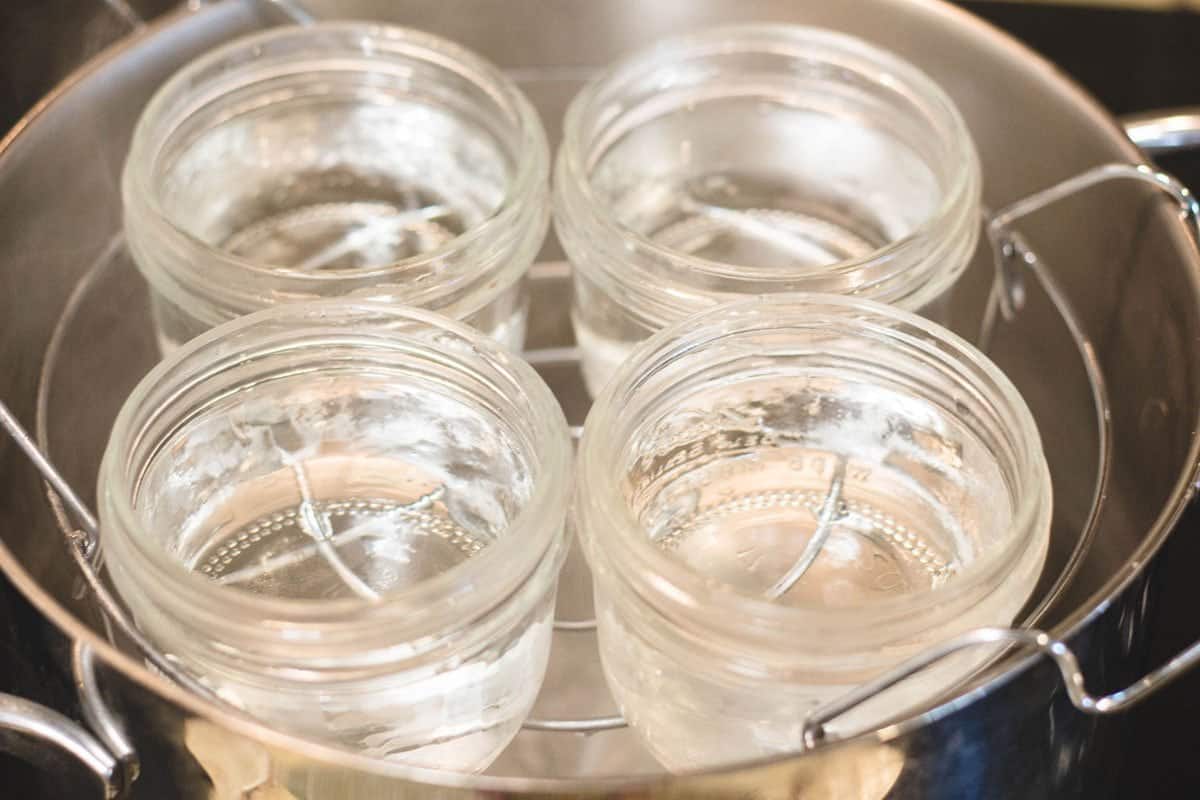
How to make Bread and Butter Pickles
The simple brine recipe is a 1:1 ratio of vinegar and water and a combination of spices. Tip: Buy spices from the bulk section which is much cheaper than buying the jarred spices, especially if you don’t use dill or mustard seed often.
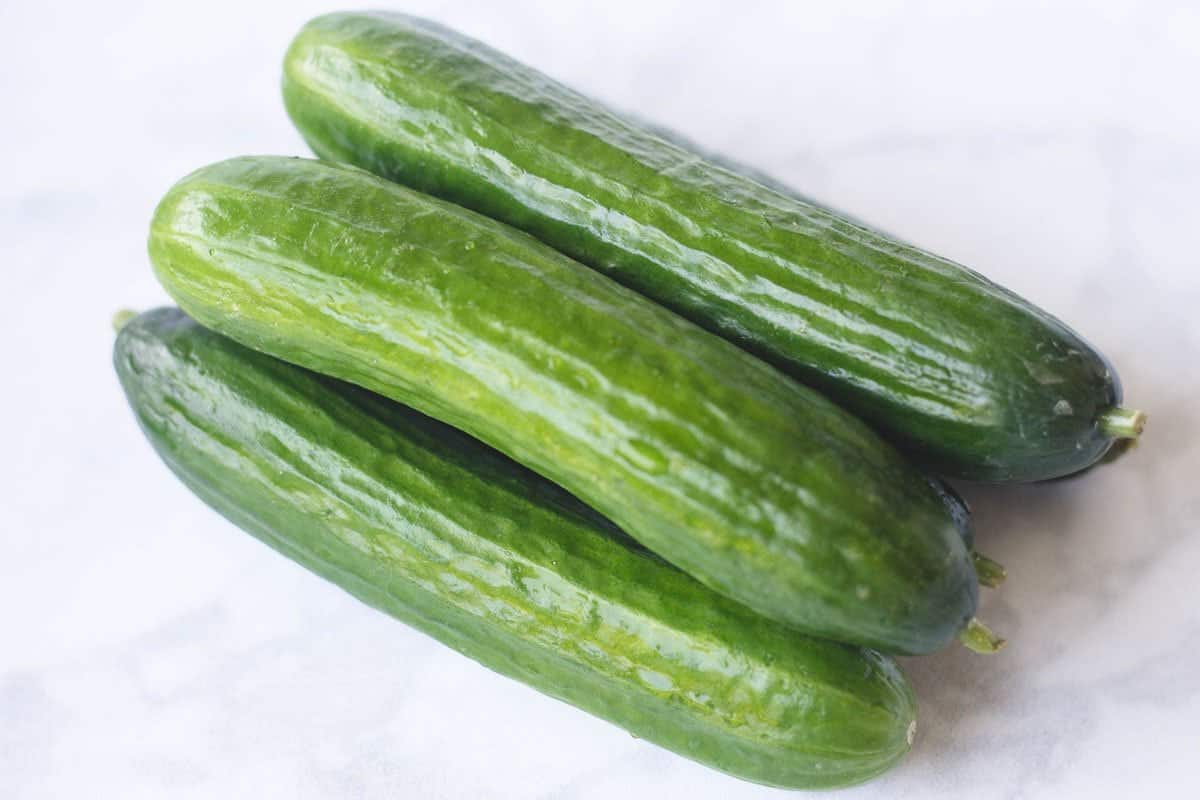
While the jars are boiling, wash the cucumbers with a vegetable brush and slice them with a clean, sharp knife.
In a small bowl, mix the spices. Put a teaspoon of the pickling spice mixture in each jar, and divide the cucumber slices evenly between the jars.
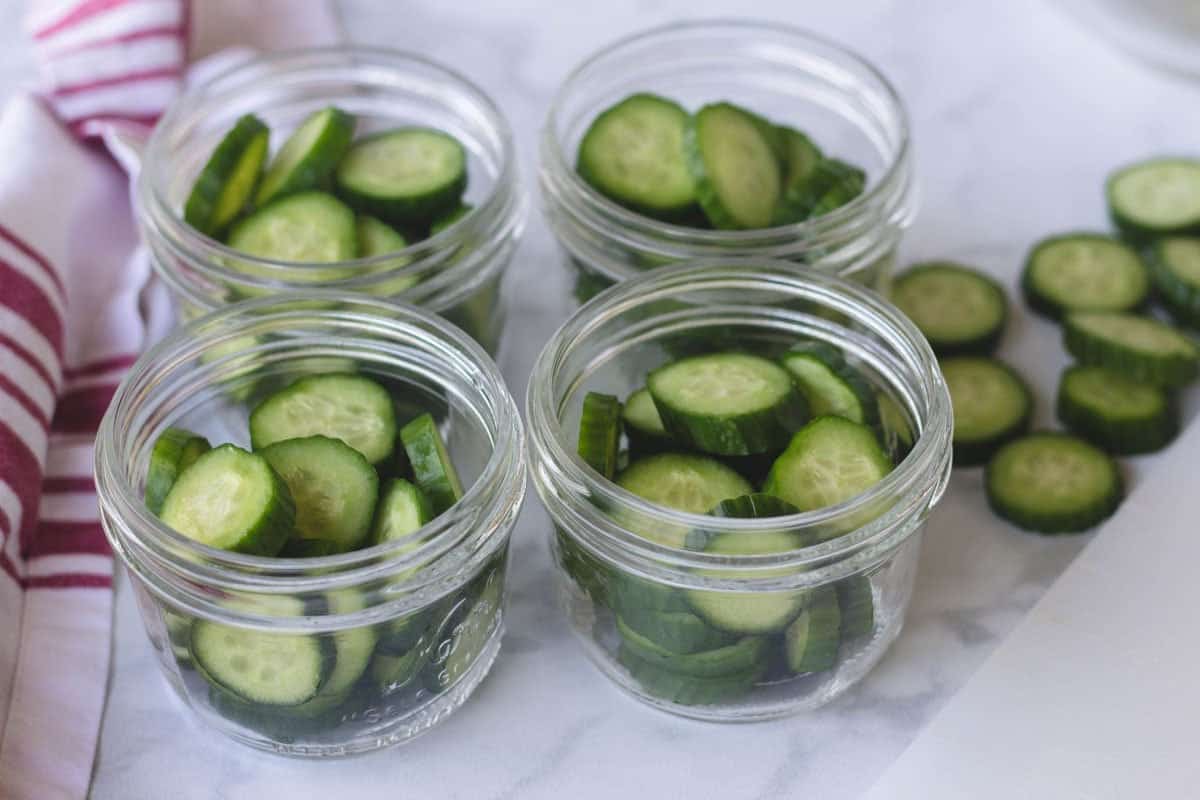
I use my Le Creuset enameled saucepan to prepare your pickling liquid in a medium-sized, non-reactive pot. Heat the water and vinegar to a simmer.
Don’t use a reactive metal pot when heating the vinegar solution; the metal reacts with the vinegar, and the pickling brine may turn cloudy and impart a metallic taste to your pickles. Reactive pots are metal pots made from aluminum, brass, and cast iron. Stainless steel is a non-reactive metal.
Cover the cucumbers in the pickling liquid and let cool slightly before putting the lids on, then refrigerate for 3-7 days before eating. You can eat them earlier, but they taste the best if you let them sit in the refrigerator for at least 3 days.
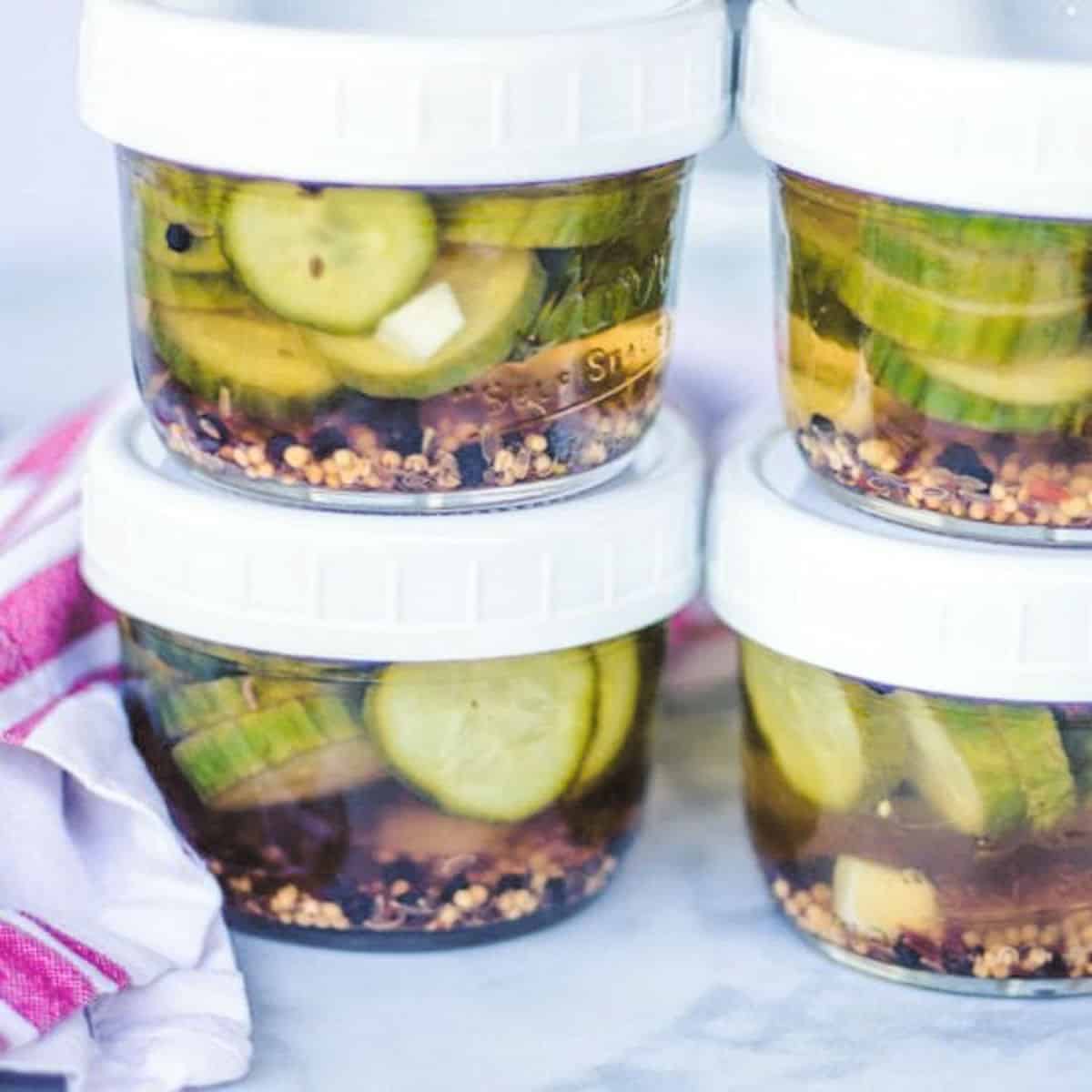
What’s the difference between Bread and Butter pickles and Dill pickles?
Bread and butter pickles are sweet and tangy pickles made from cucumbers, onions, vinegar, sugar, and spices such as mustard seeds, celery seeds, and turmeric. They have a light yellow or greenish color and a crunchy texture. Bread and butter pickles are often served as a side dish or used as a condiment on sandwiches and burgers.
On the other hand, Dill pickles are made using cucumbers, vinegar, water, salt, garlic, and fresh dill. They have a sour and salty taste and a greenish color.
In summary, the main difference between bread-and-butter pickles and dill pickles is their taste and the ingredients used in their preparation. Bread-and-butter pickles are sweet and tangy, while dill pickles are sour and salty.
For more information on pickling check out Penn States page here. This was only my second time pickling and the first time making pickles, so if any pickle experts are out there reading this, I welcome your comments.
What’s the difference between bread-and-butter pickles and sweet pickles?
Bread and butter pickles are typically made with cucumbers, onions, vinegar, sugar, and spices such as mustard seeds, celery seeds, and turmeric. On the other hand, sweet pickles can be made with various vegetables, including cucumbers, and are typically flavored with sugar, vinegar, and spices such as cinnamon and allspice.
Can any cucumber be used for pickling?
While any cucumber can technically be used for pickling, not all cucumbers are ideal for the pickling process. Cucumbers best for pickling are firm, with a thick skin and small seeds. They should also be harvested when they are still small and immature, as larger cucumbers tend to have tougher skin and more seeds.
Slicing cucumbers, commonly used for salads and sandwiches, are not as ideal for pickling, as they have a higher water content, thicker skin, and larger seeds, which can affect the quality and texture of the pickles.
In summary, while any cucumber can be used for pickling, it is best to use firm cucumbers with a thick skin and small seeds, such as English or pickling cucumbers, for the best results.
What is an English cucumber?
English cucumber, also known as a seedless or hothouse cucumber, is a type of cucumber that is longer and narrower than traditional cucumbers. It has a thin, dark green skin and is known for having fewer seeds and a milder flavor than other cucumber varieties.
What is a Persian cucumber?
A Persian cucumber is a small, thin-skinned cucumber variety that is typically about 5-6 inches long. It is crunchy, seedless, and has a mild, sweet flavor with a hint of nuttiness.
They have a firm texture and hold up well during the pickling process, making them ideal for both whole pickle and sliced pickle recipes. They also have a mild and sweet flavor that pairs well with various pickling spices, making them a versatile option for different pickling recipes.
What is a pickling cucumber?
A pickling cucumber is a type of cucumber specifically grown for the purpose of pickling. Pickling cucumbers are smaller and have thinner skin than other cucumber varieties, making them ideal for preserving in vinegar or brine. They are also firm and crunchy, which helps them maintain their texture during pickling.
Pickling cucumbers come in various shapes and sizes but are generally shorter and thicker than slicing cucumbers. They are usually harvested when they are young and have not fully matured, as this is when they have the best texture and flavor for pickling.
Did you make this recipe? I would love it if you left a comment or review! Be sure to sign up for the email list and follow “A Weekend Cook” on Pinterest and my Facebook page.
Want to Save This Recipe?
Enter your email & I’ll send it to your inbox. Plus, get great new recipes from me every week!
By submitting this form, you consent to receive emails from A Weekend Cook®.
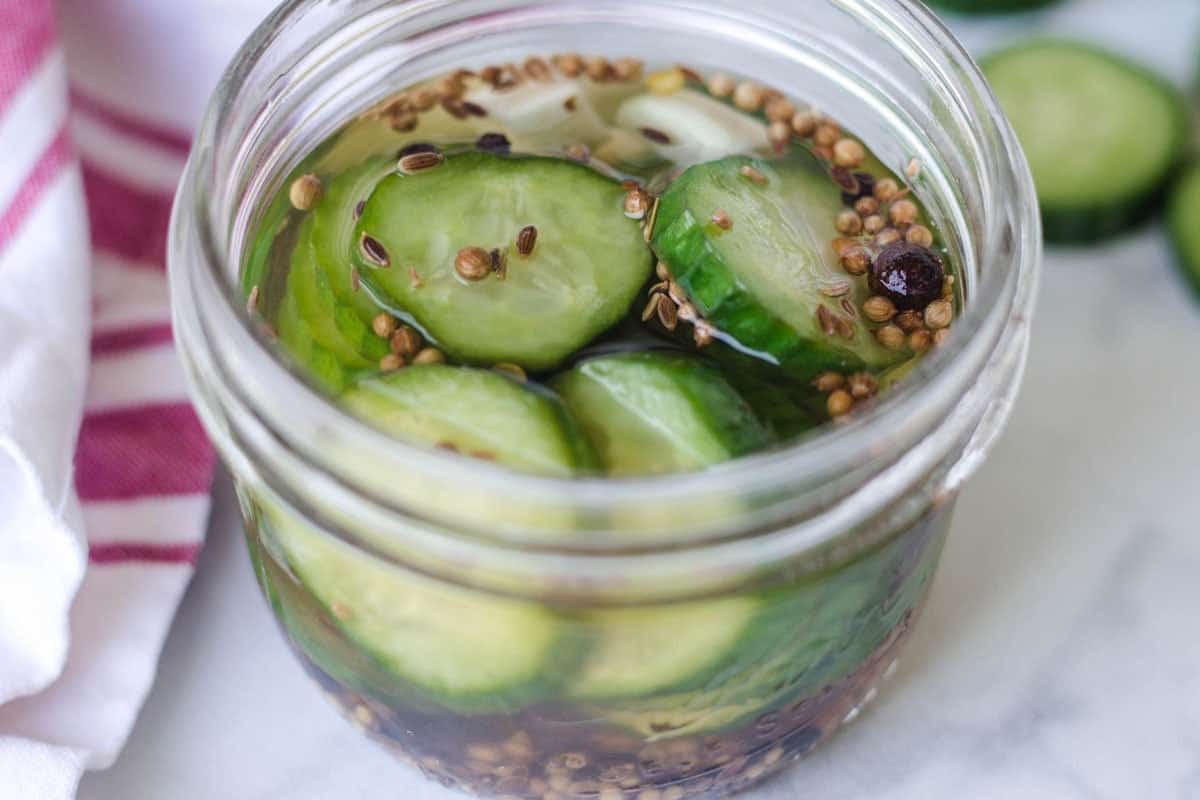
Spicy Sandwich Pickles
Ingredients
Recipe Directions
- Wash mason jars in warm soapy water.
- Fill a large stockpot with water and boil jars for 5 minutes. Remove jars and pour out any water. Set on clean towel to dry.
- Wash and dry cucumbers then slice about 1/4 inch thick.
- Place the cucumbers in large shallow bowl or dish and sprinkle with the salt and let sit while preparing the pickling liquid and spice mixture.
- In a small bowl mix the pickle spice ingredients and divide evenly between the prepared jars.
- Add one or two garlic cloves to each jar.
- Divide the cucumbers evenly between the 1/2 pint jars.
- In a medium saucepan heat the vinegar, water and simmer for a couple of minutes.
- Pour the hot liquid over the cucumbers making sure they are completely covered in the liquid. Let jars cool for about one hour.
- Place lids on jars and shake to mix up the spices.
- Refrigerate for at least 3 days before opening, Can be stored refrigerated for up to 3 weeks.
Nutrition
Tried this recipe?
Let us know how it was!Safety Note
These are refrigerator pickles and should be eaten within several days, they are not meant to be stored long term. These pickles do not require heat processing, but they must be kept refrigerated. Do not decrease the amount or strength of vinegar in the recipe.
A good safety resource on Perserving Pickles
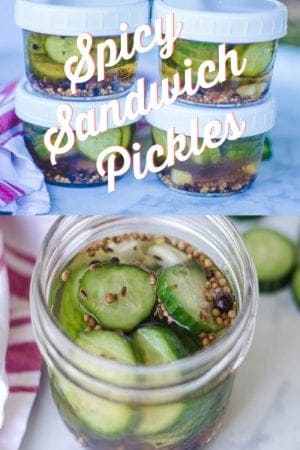

Love these pickles — not too spicy, perfect on a cheese sandwich and so easy to make.